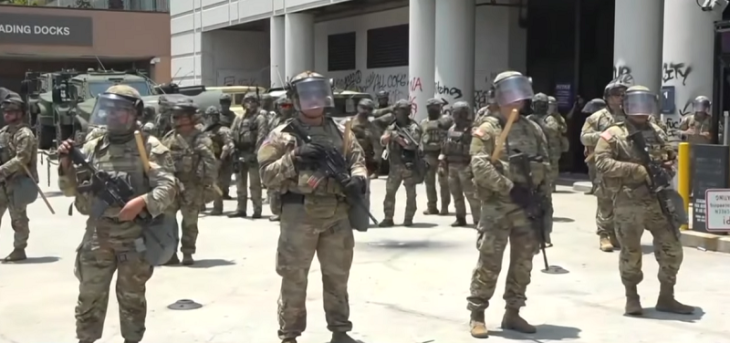Last week’s SMart Group column discussed the history of at-large representation for city council seats in Santa Monica. A proposed change in the election system would result in city council and school board seats chosen by the residents of each neighborhood rather than the entire city. Santa Monica would be divvied up into districts, with council and school board members who live in and vote on issues that affect their area first, and the entire city second. Neighborhood interests would be a priority for each council member. Such local district representation is a fundamental right in most California cities. We wrote about the admittedly racist slant that was adopted by design when the city established a new charter with an at-large election system in 1946.
Pico resident Maria Loya and the Pico Neighborhood Association now have brought a lawsuit against the City of Santa Monica alleging that the at-large election system disenfranchises ethnic residents in our city and demanding district elections. With only two African Americans and one Latino elected to the council since 1946 and no council member currently residing in the Pico Neighborhood, they have a great case in this class action suit. The law firm of Gibson, Dunn & Crutcher represents the City of Santa Monica as they fight to prevent district elections. With approximately 11,300 residents per square mile, districts are necessary for Santa Monica residents to feel that they have direct representation. The law firm of Shenkman and Hughes is representing the Pico Neighborhood in this fight to cleave our city into districts. Kevin Shenkman is the lead lawyer for Maria Loya and the PNA. They have a 100 percent success rate in forcing California cities to hew to representation that prevents a neighborhood from being continuously outvoted by the racial majority.
So why is Santa Monica hell-bent on fighting Maria, the Pico Neighborhood and the needs of its residents? The at-large system is joining the dustbin of history throughout our state. The California Voting Rights Act asserts the right to have fair, local representation by neighborhoods within a community.
Local representation would affect planning issues. The Pico Neighborhood has been the dumping ground for a freeway, the Expo line and repair yard, the city yards, rehab centers and more over the past decades. These developments might have been mitigated had there been an advocate for the Pico Neighborhood on the council. Zoning issues, crime prevention, building heights and density, and traffic patterns would be the realm of a voice from each neighborhood. Each neighborhood advocate would react with authority about downtown development policies that impact their area.
The City Council has authorized a seemingly unlimited amount of our City budget to fight what appears to be a futile battle. Our understanding is that over $8 million in taxpayer dollars will be spent to combat the possibility of better representation for our residents. The cost is $2.5 million so far. The dueling lawyers are the big winners in this fight to preserve the power of the current city council, and the longer the suit continues the more the law firms rake in. Losses may mount for individual council members as well. Each is subject to a deposition. The “grillings” have been intense and hours-long, covering issues from each area of the city. The responses are often telling, as it is almost impossible for each at-large council member to have in-depth knowledge of every neighborhood.
Five council members have been deposed so far: Vazquez, O’Day, McKeown, Himmelrich and Davis. A sixth, O’Connor, went to her appointment and angrily exited when the questioning lawyer, Mayor R Rex Parris of Lancaster, of counsel for Shenkman and Hughes, questioned her about the 2015 Elizabeth Riel settlement against the City. O’Connor’s walkout cost the City thousands of dollars, as the City’s attorneys attempted to classify questions about her actions as a council member as off-limits to Parris. O’Connor has been compelled to return to the deposition process next week by a judge, with no pre-conditions on questioning. Sanctions may also be imposed, again with more cost to the city. It is an ingenious move to choose a practicing attorney who is also a city mayor to question the sitting city council members.
Our “sitting seven” may reveal information in these depositions that doesn’t paint their most “photogenic” picture in the jobs they were elected to perform. In Palmdale, a city that also fought district elections, the current Mayor is facing charges of perjury and bribery. Already in the Santa Monica case, Council Member Vazquez revealed that he is a long time lobbyist for two firms facing serious questions about their business practices in other cities. His wife Maria Leon-Vazquez, a Santa Monica Malibu United School District (SMMUSD) school board member, is facing an investigation by Los Angeles County District Attorney Jackie Lacey after voting more than 13 times on items involving firms for which her husband worked. One council member showed ignorance of crime statistics for his high crime neighborhood and had seldom discussed crime rates with the SMPD. Another was asked extensively about environmental hazards, which included methane found in Gandara Park and a “toxic triangle” of pollution in the Pico neighborhood. Reading the 600-plus pages of depositions gives a fascinating insight into the minds of councilmembers. Their answers do show the intensity of their love for Santa Monica. The depositions continue. Some council members will be called back for additional questioning, and one has yet to be scheduled. It’s a grueling amount of time and effort to fight what appears to be the inevitable march to district elections in Santa Monica.
And, to what end? – more of our treasury wasted and continued strife in our community. A decision will render next summer. If Loya and the PNA win, all council members will stand for election, and the previously scheduled election will be canceled. New candidates will be found, around the corner in your neighborhood. The power structure will change. In the meantime, we say, “Oh My,” more depositions to come in this unnecessary lawsuit to thwart local neighborhood representation.

Phil Brock for SMa.r.t (Santa Monica Architects for a Responsible Tomorrow)
Thane Roberts AIA, Robert H. Taylor AIA, Daniel Jansenson Architect, Building and Fire-Life Safety Commissioner, Ron Goldman FAIA, Samuel Tolkin Architect, Mario Fonda-Bonardi AIA, Planning Commissioner, Phil Brock, Arts Commissioner.





















